There are two primary project delivery methods, design-build and design-bid-build. While the names are similar, each process is very different.
They follow distinct methodologies, structure teams differently, and have unique advantages and disadvantages. The right technique depends on the owner's goals and the project's size, risk, and complexity.
Jump right to the section you’re interested in.
Design-Build Projects
What is design-build?
A single entity manages design-build projects. During this process, the builder and designer work hand-in-hand to provide design, engineering, and implementation services. The early and frequent collaboration between architects, engineers, estimators, trades, and construction disciplines defines this method.
Project phases overlap and happen simultaneously.
Design-build projects makeup 44% of construction spending and is quickly growing in popularity. Due to changes in project demands and owners’ needs, this project delivery method is anticipated to grow 18% in 2021.
Keep reading to see why.
Project teams work together and collaborate often.
Design-Build Advantages
Quality of Work
If you pick a contractor upfront, you decide based on qualifications and quality, not price. Quality builders exceed performance expectations instead of striving to meet minimum requirements.
(Related: How Does ASD® Ensure Quality?)
Faster Timeline
Avoiding the bid process saves time. Using one team that collaborates from the beginning also streamlines decision making. A CII study indicated that “An experienced design-build team has the greatest opportunity of succeeding in achieving goals in schedule maintenance, construction speed, and intensity.”
Consistent Budget
This method shifts some of the project costs to the early design phase. Yet, research shows that getting the contractor involved in the beginning leads to a more reliable budget. Collaborating early and often allows teams to voice concerns, identify issues, and share suggestions while still in the conceptual phase. After all, what good is the lowest bid if the project's cost grows over time?
Reduced Risk for the Owner
Parties are contractually obligated to deliver a design that meets the owner's needs. This eliminates potential conflicts between owners, architects, and contractors. The owner is also relieved from mediating the design hand-off from designer to builder.
Streamlined Communication
Many tasks are easier to complete when the designers and builders are present at the same time. And you get better work when they can collaborate and work together throughout the process.
Design-Build Disadvantages
No Competitive Bids
Projects aren’t awarded based on the lowest bid, so the owner may not get the most competitive pricing.
Harder to Price Shop
By bundling, you forgo the bidding process and chance to select a contractor based on price. Also, many design-builders won't begin a detailed design until they've been hired, making it harder to shop around.
Lack of Contract Flexibility
By "bundling" services, you're committing to a single provider. This requires a high level of trust.
Less Creativity
Since the project timeline is faster with phases that overlap there is less time for creativity and innovation. Design-builders typically provide a one-size-fits-all type of solution.
Design-Bid-Build Projects
What is design-bid-build?
Design-bid-build is the most traditional project delivery method and appeals to those looking for low-cost bids. In this method, the owner contracts designers and builders separately. The design firm delivers 100% complete design documents. Then the owner solicits bids from contractors to perform the documented scope of work.
Project phases are distinct and happen in a specific order.
Designers and builders have no contractual obligation to each other in a design-bid-build project. The owner assumes the risk associated with the design document completeness.
Project teams operate in silos.
Design-Bid-Build Advantages
Competitive Bids
You will get the most competitive pricing since contractors are competing to win the job.
Architect Involvement
Architects have a professional responsibility to create a design on behalf of the owner. Since there's no agenda on the build-out, it will likely provide the highest-quality and most objective set of drawings. They're also more involved in construction administration to ensure the design is executed correctly.
Distinct Roles
Since design and construction roles are independent, defining ownership is clear cut. Responsibility and liability are apparent.
More Control
While both methods need owner input, design-build gives the owner much more control. They get to pick their vendors every step of the way and have the freedom to make changes to that lineup at any stage.
Design-Bid-Build Disadvantages
More Change Orders
Contractors will only bid on what is explicitly stated in the documents, so variations or mistakes in the scope can cause problems. When there are gaps in expectations, accountability comes into question, schedules get delayed, and costly change orders arise.
Late to Define Budget
Construction costs are not firm until the design stage is complete. If bids are over budget, the owner must pay for redesigns, value engineering, and rebidding. This can cause significant delays.
Extended Timeline
Adding in the bid step makes the design-bid-build process longer. Since the process is linear, a delay in any phase will push the entire project back. Redesigns, change orders, and lack of communication can also lead to project delays.
Lack of Product Logistics Insights
Since architects aren't involved in the execution and implementation phase they lack insight on product availability, fluctuating market costs, and coordinating logistics. They may design a solution without considering the current price of copper, systems that may be backordered, etc. Not accounting for this can lead to delays and additional costs from expedited shipping and re-designs.
Conflict Between Teams
Since teams work individually, they operate with only their best interest in mind. This can lead to a breakdown in communication, collaboration, and comradery. Extra costs, delayed schedules, and litigations can arise due to friction between parties.
Design-Build VS. Design-Bid-Build
The difference between design-build and design-bid-build lies in the relationship and responsibilities of the construction team.
The two methods structure their teams differently.
Design-build projects bundle designers and developers under the same contract. Project phases happen simultaneously.
Design-bid-build projects contract designers and builders independently. Project phases are defined and happen sequentially.
Each project delivery method follows a different timeline process.
The University of Texas analyzed the performance of 75 design-build and design-bid-build projects for the U.S. Navy. They found that “Design-build projects took less time, had less cost growth, and were less expensive to build in comparison to design-bid-build projects.”
Another study by the Construction Institute found that design-build projects had a 6% reduction in change orders, 102% faster delivery speed, and 3.8% less cost growth compared to design-bid-build.
Which factors matter most to you?
Which method is right for your project?
Recently, the design-bid-build method has been challenged due to the disadvantages listed above. Design-build is proving to deliver a better balance between cost and quality. Still, the traditional design-bid-build method has a place.
Design-bid-build might be a better fit if…
- Your project is so simple that design changes are unlikely, and collaboration and subcontractor expertise are unnecessary.
- Your project is so simple the only way to control cost is with competitive bidding.
- You’re comfortable managing the separate players and prefer each of them to “stay in their lane.”
- You don’t mind a lengthier project timeline.
- You’re working on a public project that requires a fair bidding process.
Design-build might be a better fit if…
- You have a complex project that would go smoother with collaboration between players.
- You care greatly about the schedule or need to follow an expedited timeline.
- Your priority is cost and quality of deliverables.
- You want to reduce your risk and involvement.
If you're interested in getting a turn-key solution for your next project, ASD® provides design-build services. Our team of experienced project managers and engineers can develop a plan that fits your organization's needs, budget, and timeline.
If you're interested in pure, objective technology consulting, our daughter company NTI provides design-only services.
Picking the right project delivery method is important; you need to be confident in your decision. Whether you have questions about design-build, design-bid-build, or want to discuss your next project, our team is ready to help. Contact us or call 800-222-5464 to speak with someone right away.
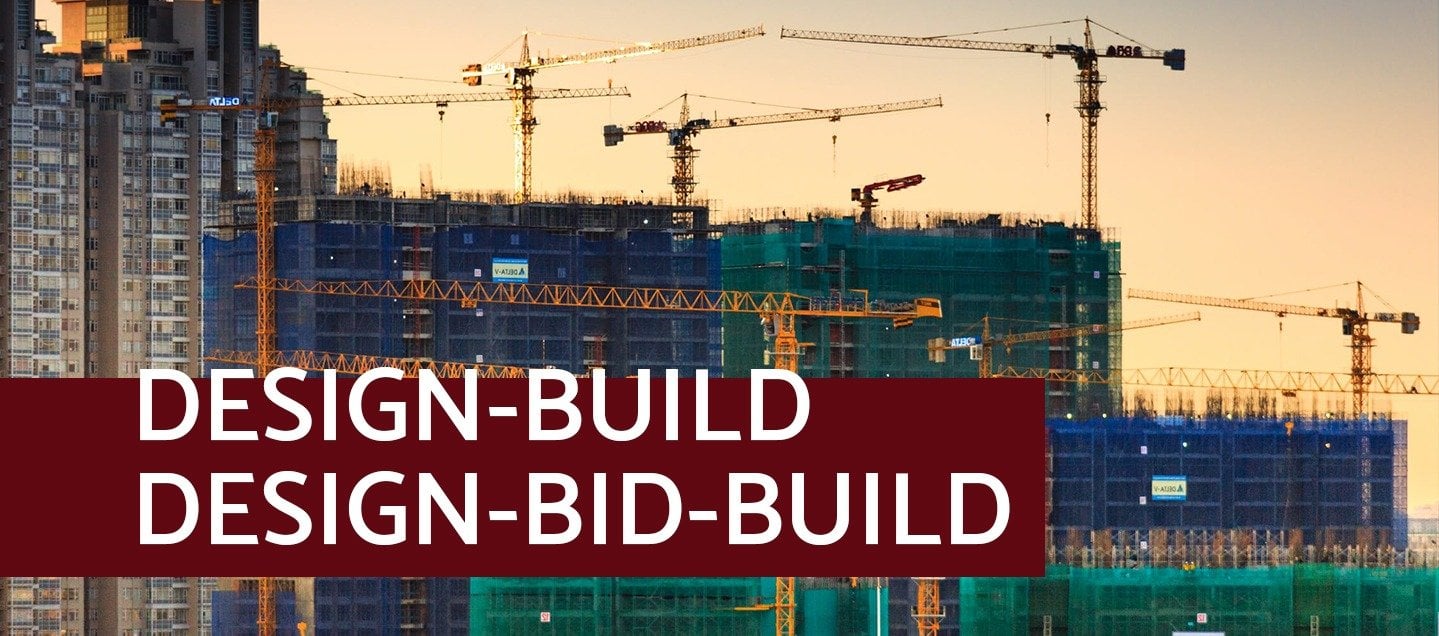

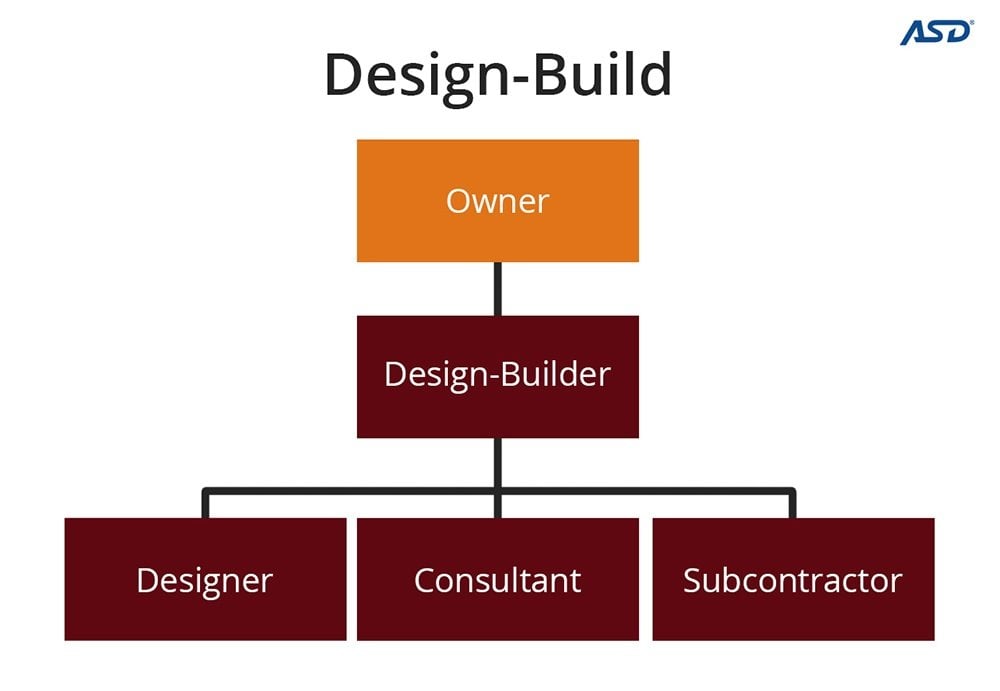
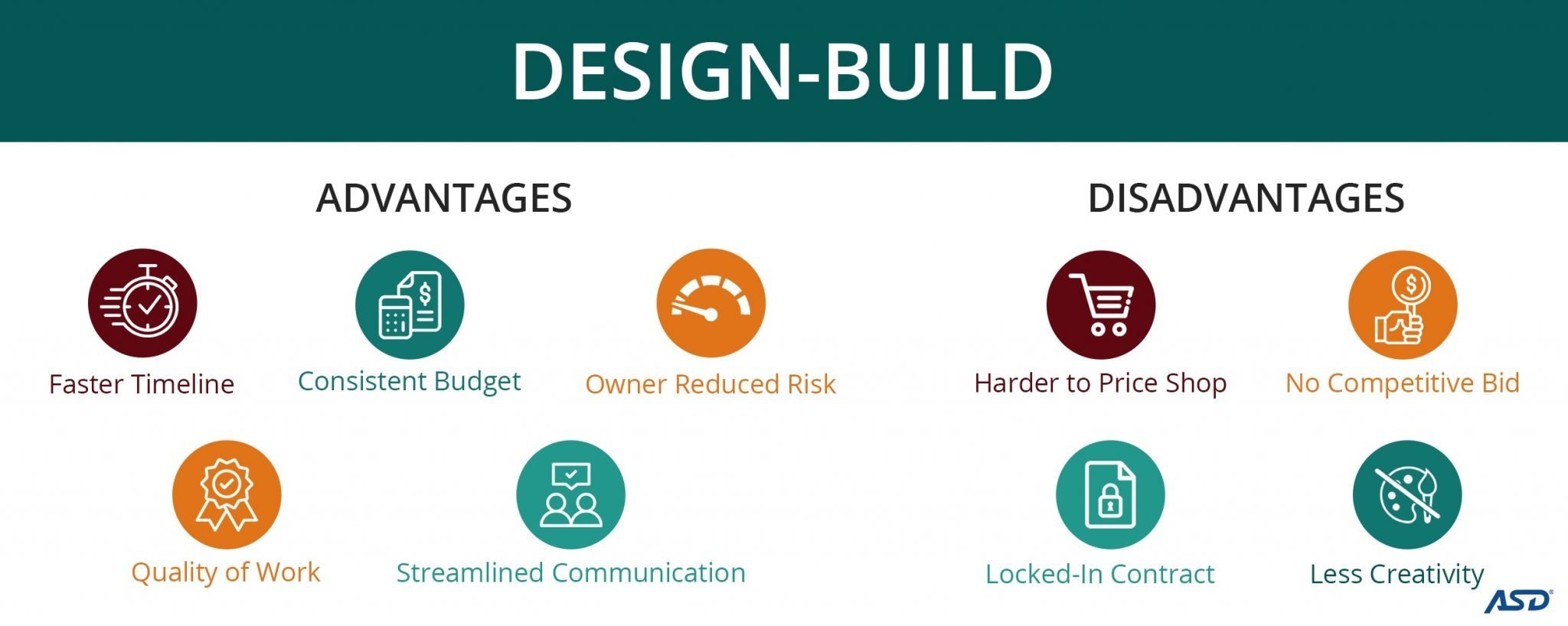
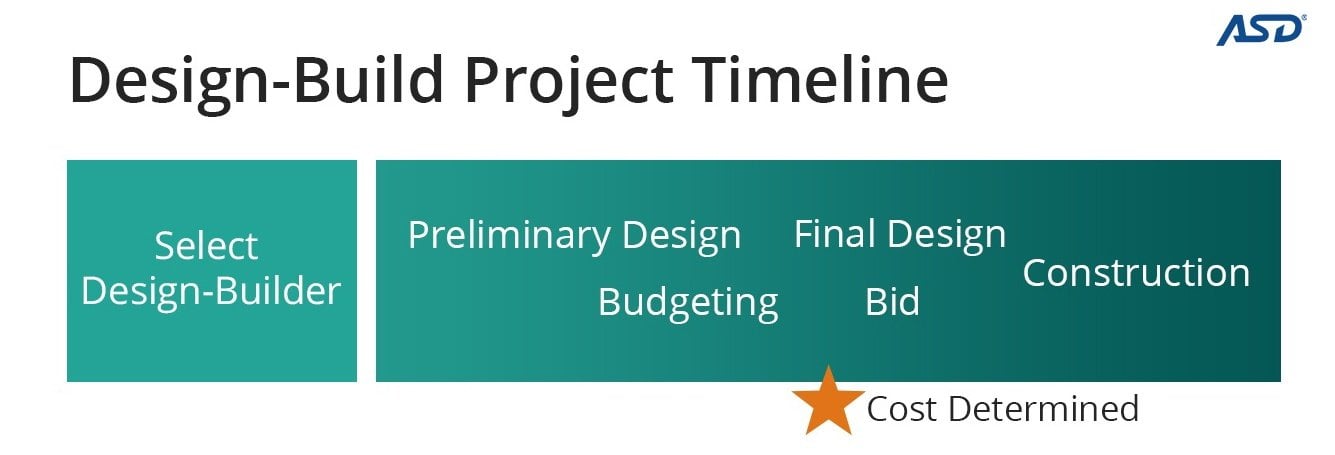
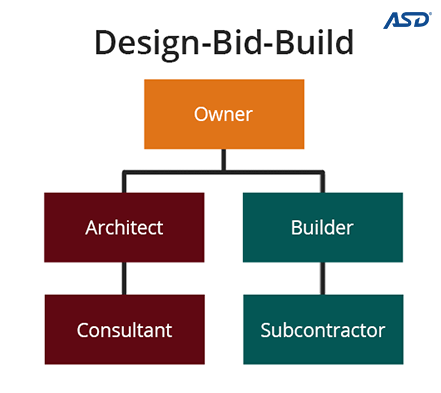
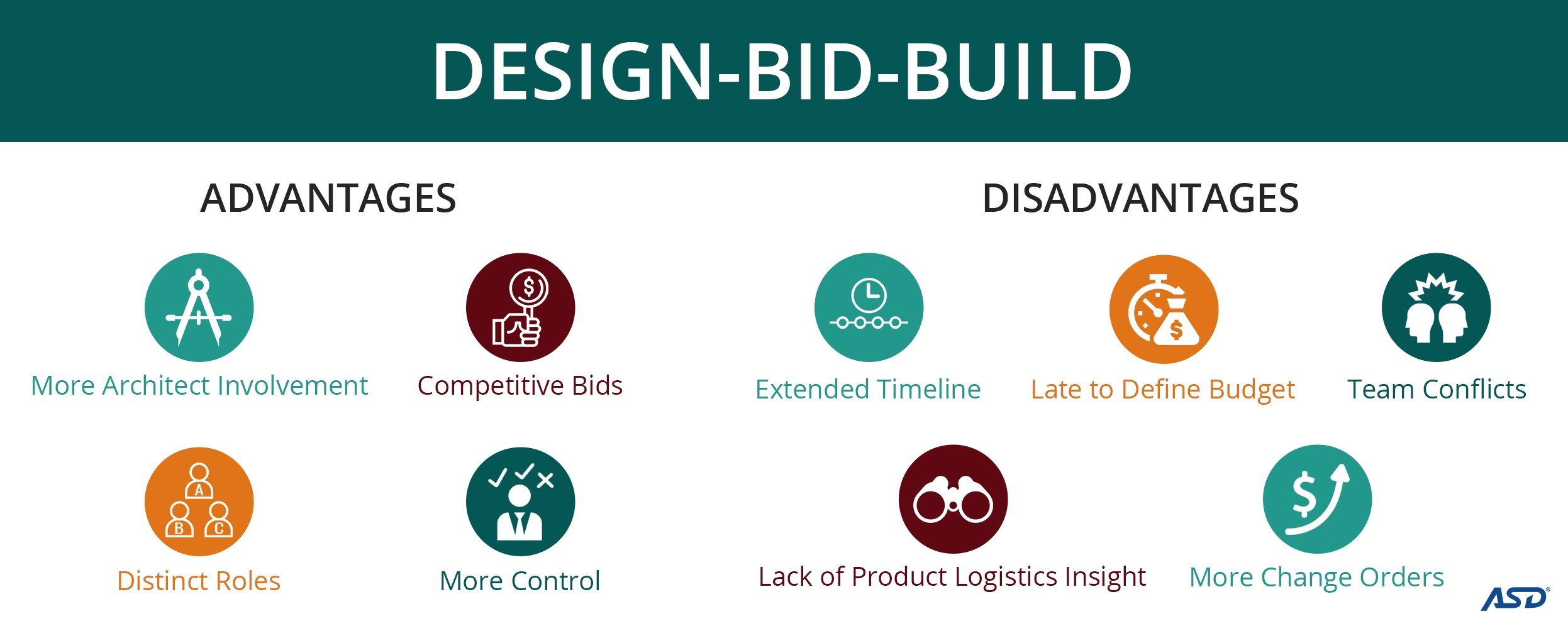
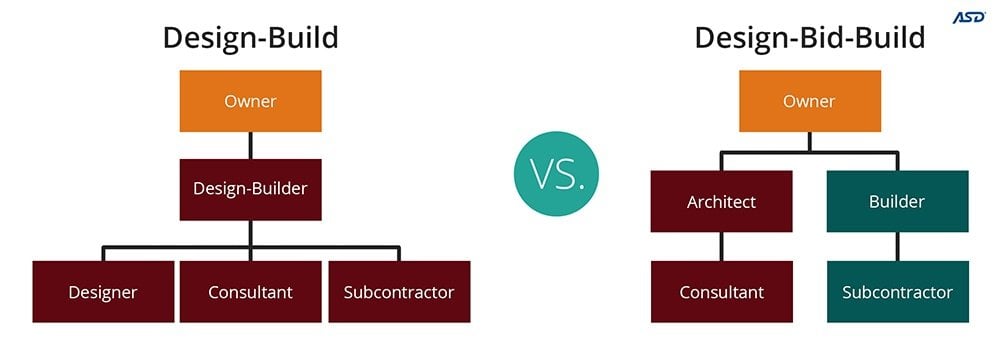
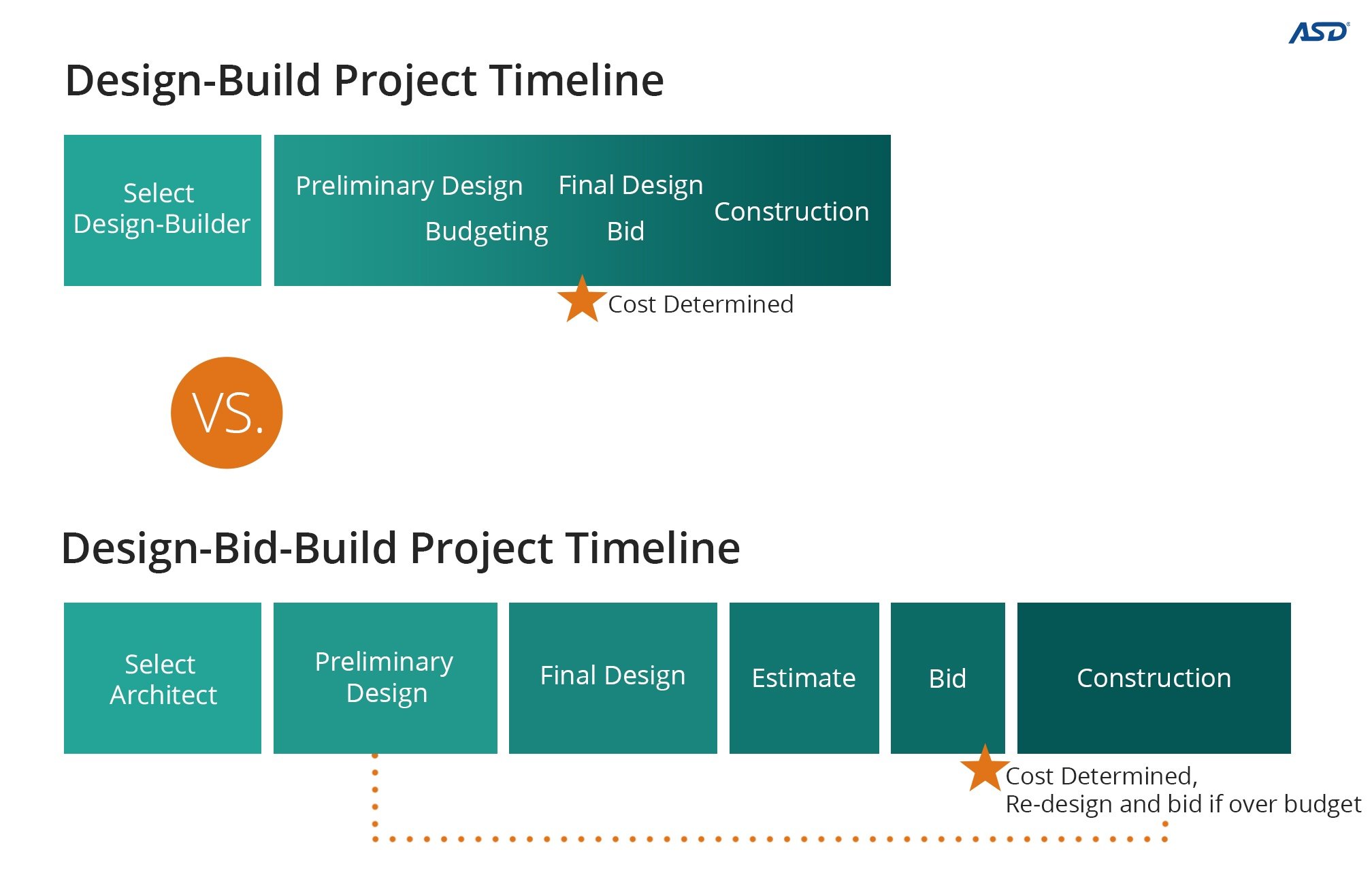
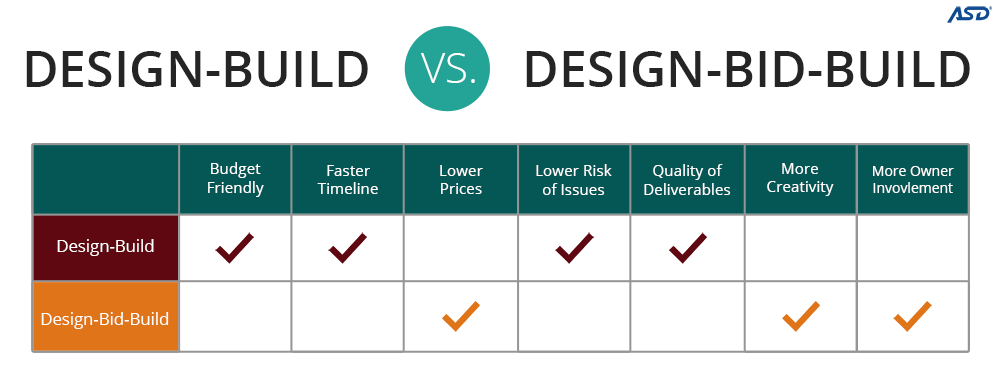


Leave a Comment